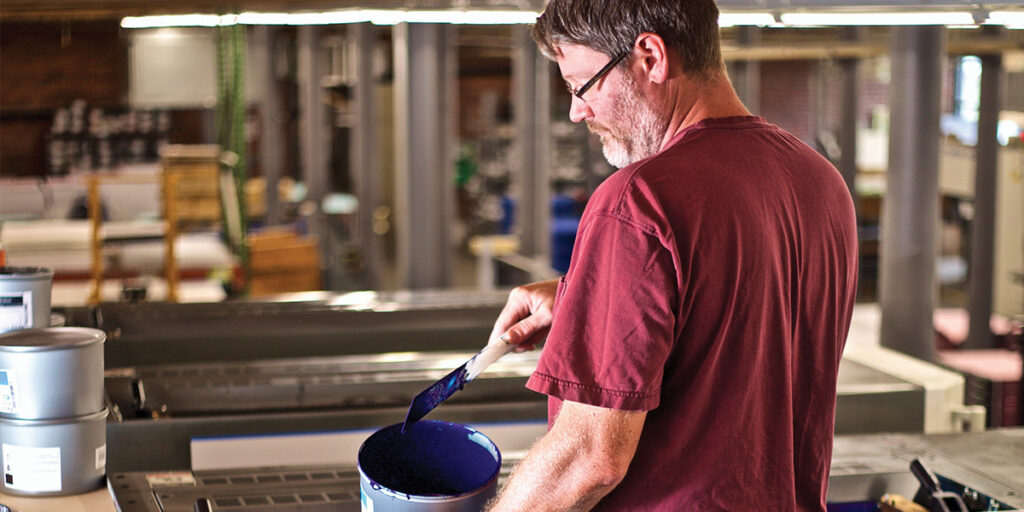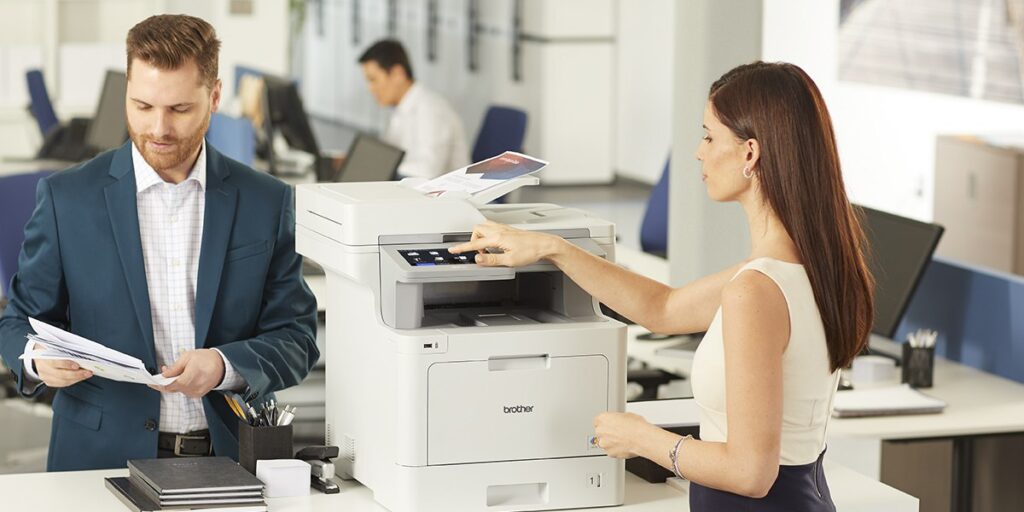The post Commercial Printing: Revolutionizing the Business World appeared first on Krause Intaglio.
]]>The Evolution of Commercial Printing
Commercial printing has a rich history that dates back to the invention of the printing press by Johannes Gutenberg in the 15th century. Since then, the industry has undergone significant transformations. From traditional letterpress printing to modern digital printing technologies, the evolution of commercial printing has revolutionized the way businesses communicate with their target audience.
The Importance of High-Quality Prints
In the digital era, where online content is abundant, high-quality prints stand out and leave a lasting impression. Well-designed brochures, business cards, and other printed materials not only convey professionalism but also enhance brand credibility. They provide a tangible representation of a company’s values, products, and services, making them a valuable asset in building customer trust.
Types of Commercial Printing
Offset Printing
Offset printing, also known as lithography, is a widely used commercial printing method. It involves transferring ink from a plate to a rubber blanket, which is then rolled onto the printing surface. Offset printing offers excellent color reproduction, sharp image quality, and compatibility with various paper types.
Digital Printing
Digital printing has revolutionized the commercial printing industry by enabling quick and cost-effective printing solutions. This method eliminates the need for printing plates and allows for on-demand printing, making it ideal for small print runs and personalized marketing materials. Digital printing offers flexibility, fast turnaround times, and the ability to incorporate variable data.
Large Format Printing
Large format printing caters to the production of oversized prints, such as banners, posters, and signage. This printing method utilizes specialized equipment capable of printing on large media sizes, ensuring eye-catching visuals for promotional materials. Large format printing is commonly used in retail displays, trade shows, and outdoor advertising.
Flexographic Printing
Flexographic printing is a versatile commercial printing technique commonly used for packaging materials, labels, and tags. It involves the use of flexible relief plates and fast-drying inks, making it suitable for printing on a wide range of substrates. Flexographic printing offers excellent color vibrancy and is often used in industries such as food packaging, pharmaceuticals, and logistics.

The Advantages of Commercial Printing
Tangible Marketing Collateral
In an increasingly digital world, physical marketing collateral provides a tangible experience that engages the senses of potential customers. Brochures, flyers, and direct mail pieces allow individuals to interact with a brand’s message in a way that online advertisements cannot replicate.
Enhanced Brand Identity
Commercial printing allows businesses to reinforce their brand identity through consistent visual communication. From color schemes to font choices, every element of printed materials can be customized to align with a company’s brand guidelines, fostering brand recognition and recall.
Customization and Personalization
With advancements in printing technology, commercial printing offers high levels of customization and personalization. Variable data printing allows businesses to tailor their printed materials to individual recipients, creating a personalized and relevant experience that resonates with customers.
Cost-Effective Solutions
Contrary to popular belief, commercial printing can be a cost-effective marketing strategy. With advancements in digital printing, businesses can print small quantities on-demand, reducing excess inventory and minimizing waste. Additionally, bulk printing offers economies of scale, making it an affordable option for large print runs.
Choosing the Right Printing Service Provider
When it comes to commercial printing, choosing the right service provider is crucial. Consider the following factors to ensure you partner with a reliable printing company that meets your specific requirements:
Assessing Quality and Capabilities
Examine the print quality of the service provider’s previous work. Request samples to evaluate color accuracy, image sharpness, and overall attention to detail. Additionally, assess their range of printing capabilities to ensure they can deliver the desired print materials.
Evaluating Turnaround Time
Timely delivery is essential for marketing campaigns and time-sensitive projects. Discuss turnaround times with the printing service provider and ensure they can meet your deadlines without compromising print quality.
Considering Environmental Impact
In an era focused on sustainability, consider the printing service provider’s commitment to eco-friendly practices. Look for certifications such as Forest Stewardship Council (FSC) and inquire about their use of recycled materials and environmentally friendly inks.
Trends and Innovations in Commercial Printing
Commercial printing continues to adapt and innovate to meet the evolving needs of businesses. Here are some notable trends shaping the industry:
Variable Data Printing
Variable data printing allows businesses to create highly personalized printed materials by incorporating individualized information such as names, addresses, and tailored messages. This customization enhances the relevance of printed materials, resulting in improved customer engagement.

Sustainable Printing Practices
With growing environmental consciousness, sustainable printing practices are gaining prominence. Printing companies are increasingly adopting eco-friendly measures such as using recycled papers, soy-based inks, and implementing energy-efficient printing technologies.
Augmented Reality Integration
Augmented reality (AR) is being integrated into commercial printing to provide interactive and immersive experiences. By scanning printed materials with a smartphone or tablet, users can access additional digital content, such as videos or 3D models, enhancing engagement and leaving a lasting impression.
The Future of Commercial Printing
As technology continues to advance, the future of commercial printing looks promising. Emerging technologies like 3D printing, nanography, and improved inkjet printing techniques are set to revolutionize the industry further. Commercial printing will continue to be a valuable tool for businesses seeking effective ways to connect with their target audience.
In a world inundated with digital advertisements, commercial printing stands as a tangible and effective marketing medium. The power of high-quality prints, customization options, and the ability to create a lasting brand identity make commercial printing an indispensable tool for businesses. From brochures to business cards, commercial printing offers a diverse range of options to communicate with customers in a meaningful way.
In conclusion, commercial printing continues to play a crucial role in the business world, providing tangible marketing collateral, enhancing brand identity, and offering cost-effective solutions. With advancements in technology, the industry is evolving, incorporating sustainability practices and innovative trends such as variable data printing and augmented reality integration. As we look to the future, commercial printing will remain a vital component of successful marketing strategies.
The post Commercial Printing: Revolutionizing the Business World appeared first on Krause Intaglio.
]]>